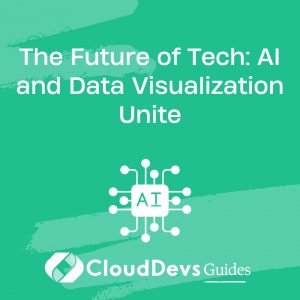The Future of Tech: AI and Data Visualization Unite
In the fast-paced world of technology and startups, harnessing the power of Artificial Intelligence (AI) has become a game-changer. Early-stage startup founders, VC investors, and tech leaders understand that AI can provide a significant edge in outperforming the competition. However, AI development is not just about algorithms and data; it’s about effectively communicating insights. In this article, we’ll delve into the importance of data visualization in AI development and provide real-world examples to illustrate its impact.
1. Why Data Visualization Matters
Data is the lifeblood of AI. It’s the fuel that powers algorithms and enables AI systems to learn and make predictions. However, raw data alone isn’t enough. To make data-driven decisions and effectively communicate findings, data needs to be transformed into actionable insights, and this is where data visualization comes into play.
2. Enhancing Understanding
Complex AI models generate vast amounts of data. Visualizing this data helps stakeholders, including startup founders and investors, gain a clear understanding of the AI’s performance and behavior. It simplifies the complex and makes it accessible.
- Identifying Trends and Patterns: Data visualization tools enable the detection of trends and patterns that might be hidden in a sea of numbers. This is crucial for making informed decisions in a dynamic tech landscape.
- Facilitating Decision-Making: In startup environments, quick decision-making is essential. Visualization aids in presenting information in a digestible manner, allowing leaders to make informed choices rapidly.
Now, let’s dive into some real-world examples of how data visualization has been pivotal in AI development.
3. Netflix’s Recommendation Engine
Netflix, the streaming giant, relies heavily on AI to recommend content to its users. They understand that providing personalized recommendations is key to retaining subscribers. Netflix uses data visualization to track user behavior, preferences, and engagement.
Example: When a user logs in, Netflix presents a visually appealing dashboard with rows of movie and TV show thumbnails, tailored to the individual’s viewing history. This visualization of content recommendations not only engages the user but also encourages longer viewing sessions, ultimately boosting user satisfaction and retention.
4. Tesla’s Self-Driving Visualization
Tesla’s Autopilot system is a prime example of AI in the automotive industry. The company uses data visualization to demonstrate the capabilities of their self-driving technology.
Example: Tesla’s in-car visualization displays real-time information about the vehicle’s surroundings, including other cars, pedestrians, and traffic signs. This not only enhances the driver’s trust in the AI system but also provides critical insights into how the AI perceives and reacts to the environment.
5. Airbnb’s Price Suggestions
Airbnb employs AI algorithms to suggest pricing for hosts. To ensure transparency and help hosts maximize their earnings, Airbnb employs data visualization to present pricing recommendations.
Example: Hosts can see a graphical representation of how different price points may impact their occupancy and earnings. This visualization empowers hosts to make data-informed decisions on pricing, optimizing their business performance.
6. External Resources
To further explore the world of AI development and data visualization, here are three external links:
- Tableau Public – https://public.tableau.com/en-us/s/gallery: Tableau’s public gallery is a treasure trove of data visualizations across various domains, showcasing the power of visualization in storytelling.
- D3.js – https://d3js.org/: D3.js is a JavaScript library for creating interactive data visualizations in the web browser. It’s a valuable resource for tech enthusiasts interested in building their own data visualizations.
- Data Visualization Society – https://www.datavisualizationsociety.com/: This community of data visualization professionals offers insights, resources, and a network for those passionate about visualizing data effectively.
Table of Contents









